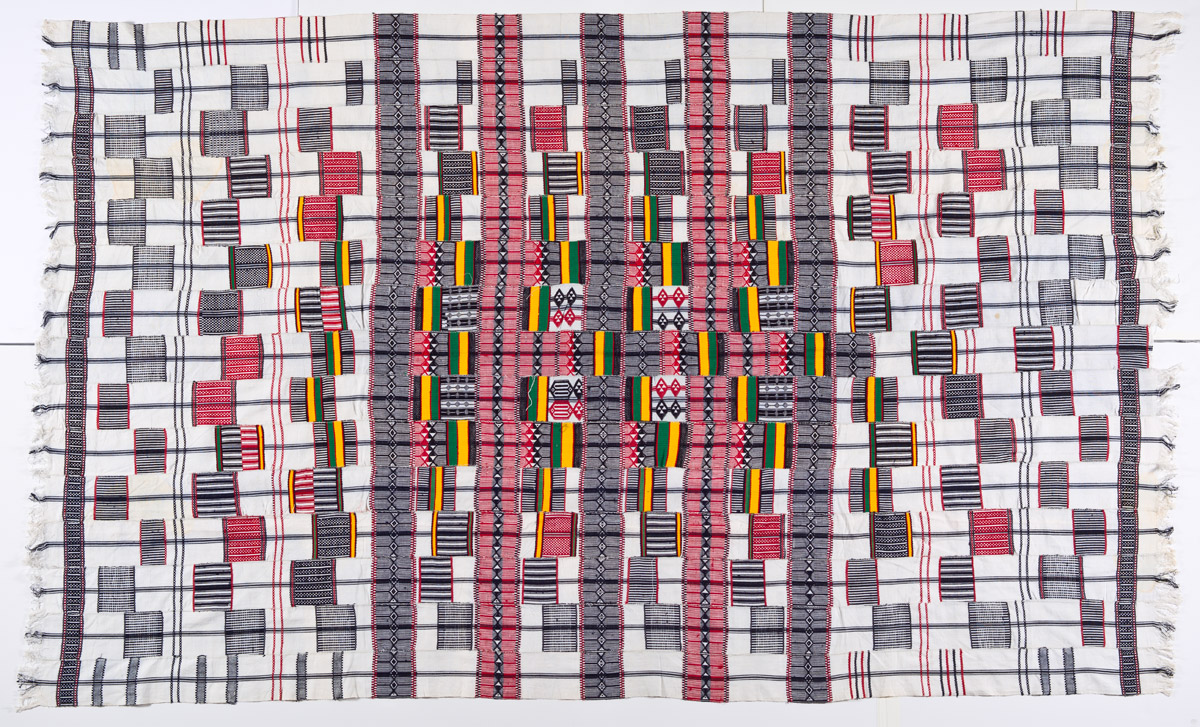Téra-tera

Djerma, Téra-tera, ca. 1980s, Cotton, synthetic thread, Museum purchase, The Dorothy Johnston Towne (Class of 1923) Fund 2020.9.5
The Davis Museum recently acquired this téra-tera from John Hutchison, Associate Professor Emeritus of Modern Foreign Languages, Boston University, who purchased it in Niger. Like many handwoven textiles from West Africa, this téra-tera was woven in individual strips that were sewn together to create a larger textile. Used as wrap garments and blankets, all téra-tera cloths feature small rectangular designs in red, black, and white, with particular focus on the babba, a large central section in which more complex motifs are balanced both horizontally and vertically. Green and orange, representing the Nigerien flag, were introduced in the 1960s.
Invented by Djerma weavers in and around the town of Téra in the 1940s, the téra-tera quickly became the most important kind of textile gifted to both brides and grooms during Djerma weddings. The téra-tera genre grew out of a multicultural milieu: weavers adapted motifs from other traditions, especially Fulani wool weaving, to create a textiles that symbolically wrapped newlyweds in protection and love from their families. Women could use theirs as garments to wrap around the body lengthwise during the day, and men could use theirs as wraps or blankets to wear at home at night. Since Nigerien independence in 1960, the téra-tera has increasingly become a national symbol, and citizens from all cultures in Niger may incorporate one or two into wedding festivities. Beginning in the 1980s, owners have primarily stored them as precious keepsakes, rather than wearing them.